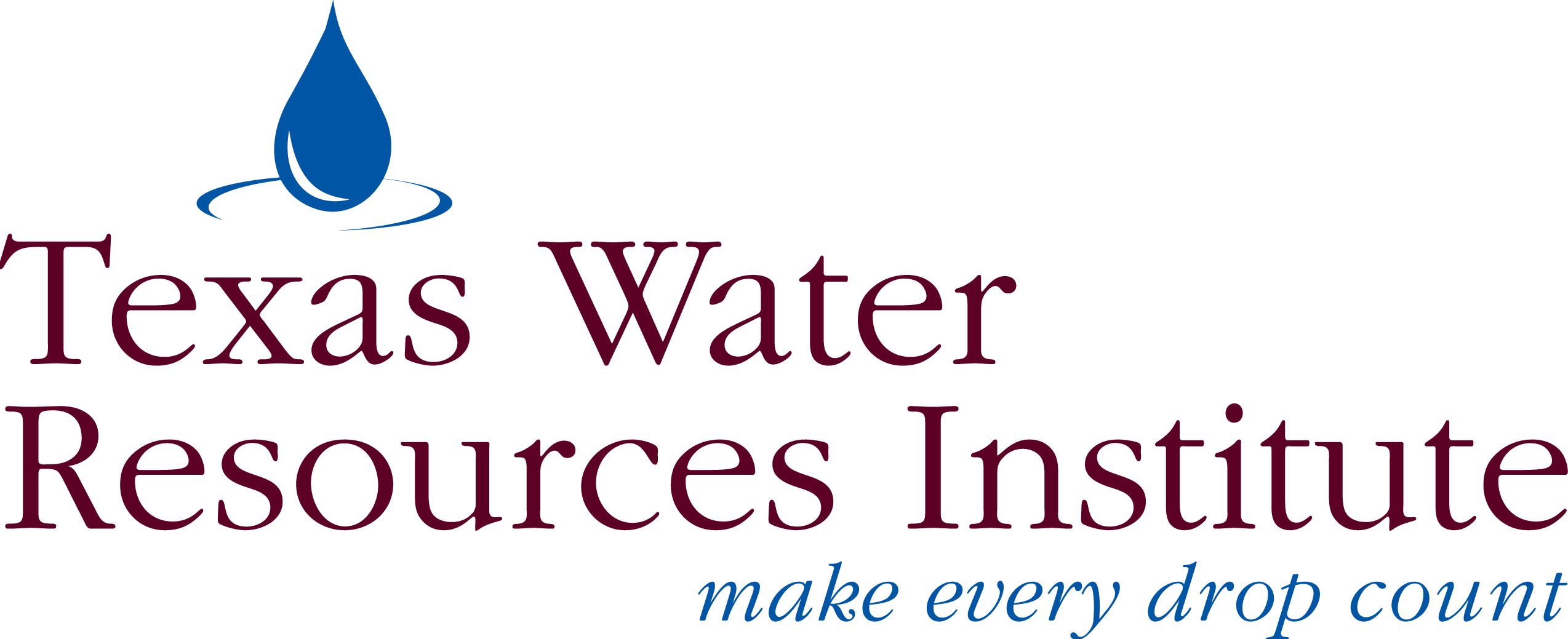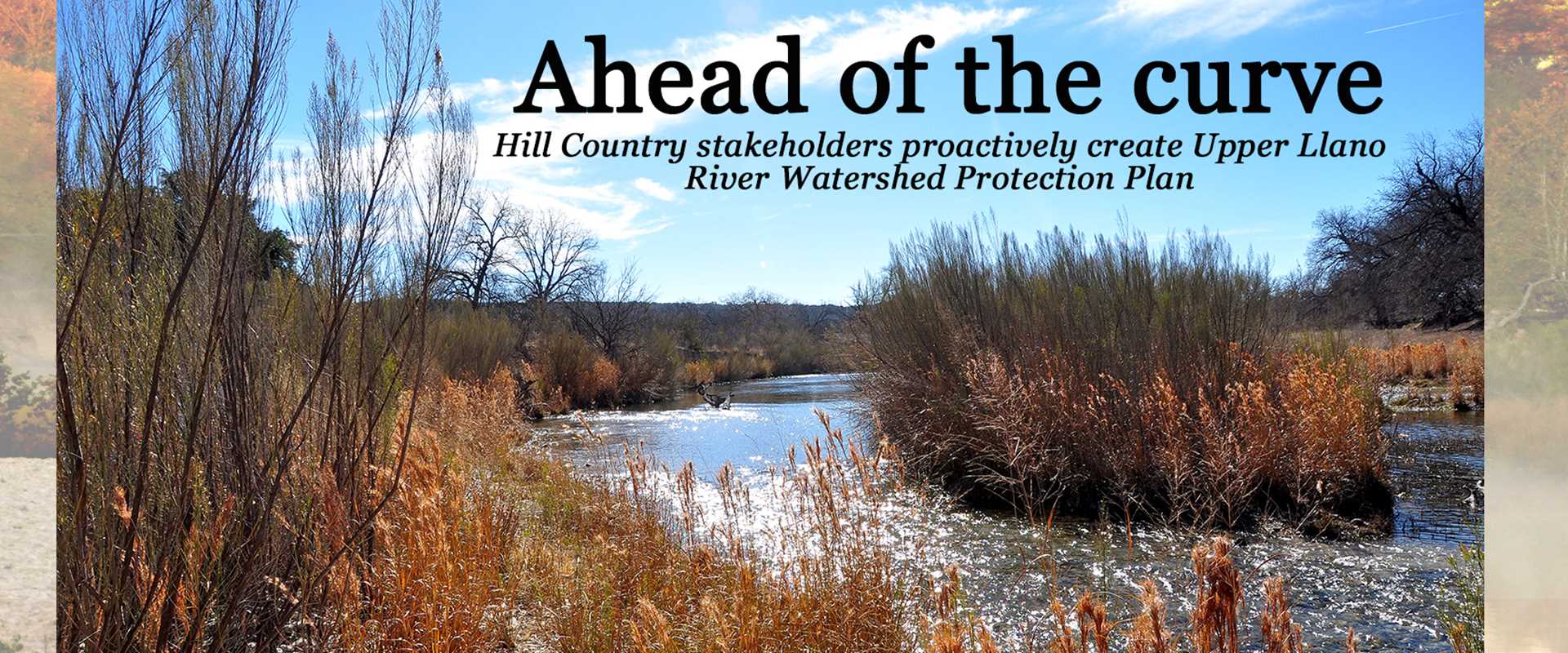By Claire Corley
Composed of the North and South Llano rivers, the Upper Llano River is known as a Hill Country treasure. Its near-pristine flows provide a healthy ecosystem supporting a variety of aquatic communities and numerous recreational opportunities.
To sustain the river’s pristine condition, local stakeholders partnered with the Texas State Soil and Water Conservation Board (TSSWCB), soil and water conservation districts, groundwater conservation districts, Texas Tech University Llano River Field Station, Texas Water Resource Institute (TWRI), Texas Parks and Wildlife Department and the Llano River Watershed Alliance to develop a watershed protection plan (WPP).
Typically, a WPP is developed in a watershed that is impaired and needs restoration; the Upper Llano River WPP is an exception.
Dr. Kevin Wagner, former TWRI deputy director of engagement, said that in impaired watersheds, water quality criteria have been exceeded and WPPs are then developed to achieve needed reductions. Since the Upper Llano River’s water quality did not exceed any regulatory standards, stakeholders had great flexibility to develop their vision for the watershed and identify what they wanted to see implemented over the next five to 10 years.
Landowners got it started
Wagner said landowners and landowner associations were already working on improving the watershed prior to this planning effort, which generated great interest in possible collaborative opportunities among a variety of state agencies, nongovernmental organizations and university programs, including TWRI.
Dr. Tom Arsuffi, Llano River Field Station director, agreed the stakeholders were the driving force behind the WPP.
“To address complex issues requires a ‘bridging of silos’ approach,” Arsuffi said. “That is why this plan is effective; it brings together expertise from Texas Tech University and Texas A&M University, landowners and ranchers, county judges and mayors, state and federal agencies, and others.”

Stakeholders such as County Judge Delbert Roberts and Llano Springs Ranch owner Tom Vandivier know how important the well-being of the river is to everyday life.
“It is easier to prevent something than to reinvent it or clean it up, so anything we do is better than nothing or allowing it to get worse,” Roberts said.
Vandivier said the citizens of Texas have a responsibility to help protect the natural resources of the state, including rivers such as the North and South Llano.
“What we do on private property to protect and enhance the habitat in our watersheds is critical to protecting that resource for everyone,” Vandivier said. “Good land stewardship practices are vital to this protection and enhancement.”
Model for the Hill Country
The plan was funded by a federal Clean Water Act Nonpoint Source Grant administered by the TSSWCB from the U.S. Environmental Protection Agency (EPA).
Tyson Broad, Llano River Field Station watershed coordinator, said two and a half years of water quality and biological monitoring and analysis went into informing stakeholders about potential issues in the river and opportunities for improving and sustaining it.
Findings showed potential problems related to the river’s low flow in 2011–2012 and an overpopulation of wildlife impeding growth of young woody plants along the riparian area, Broad said.
Stewardship education is likely the most important thing we can do to protect our land, habitat, water and wildlife. How will people understand how to protect the river if we don’t teach them?Llano Springs Ranch owner Tom Vandivier
The Upper Llano River WPP proactively addresses emerging water quality concerns, invasive species, aquatic habitat loss and altered water flows through voluntary, non-regulatory watershed management strategies.
Because of its proactive, non-regulatory approach, Arsuffi said the Upper Llano River WPP is a model for the rest of the Hill Country.
Implementation begins
Since approval by EPA in September 2016, the implementation phase of the WPP has made great progress through efforts by the stakeholders, Arsuffi said.
To start implementing the WPP, Broad said range management and restoration programs, as well as demonstrations at the field station, have been funded.
“We are starting a streambank restoration project at the Llano River Field Station and a brush control demonstration project as well,” Broad said.
He said the city of Junction has applied to the Texas Water Development Board for financial assistance to install water conservation projects in the city. These efforts include smart meters, identifying line leaks in water distribution networks and low-flow toilets.
Arsuffi said with the better watershed management upstream, the Upper Llano River WPP is not only ensuring the water quality and quantity of the North and South Llano rivers but also improving flows and water quality for downstream aquatic ecosystems and cities, including the city of Austin and the Highland Lakes.
The successful implementation efforts ultimately depend on effective education and outreach to landowners in the watershed.
“Stewardship education is likely the most important thing we can do to protect our land, habitat, water and wildlife,” Vandivier said. “How will people understand how to protect the river if we don’t teach them?”



